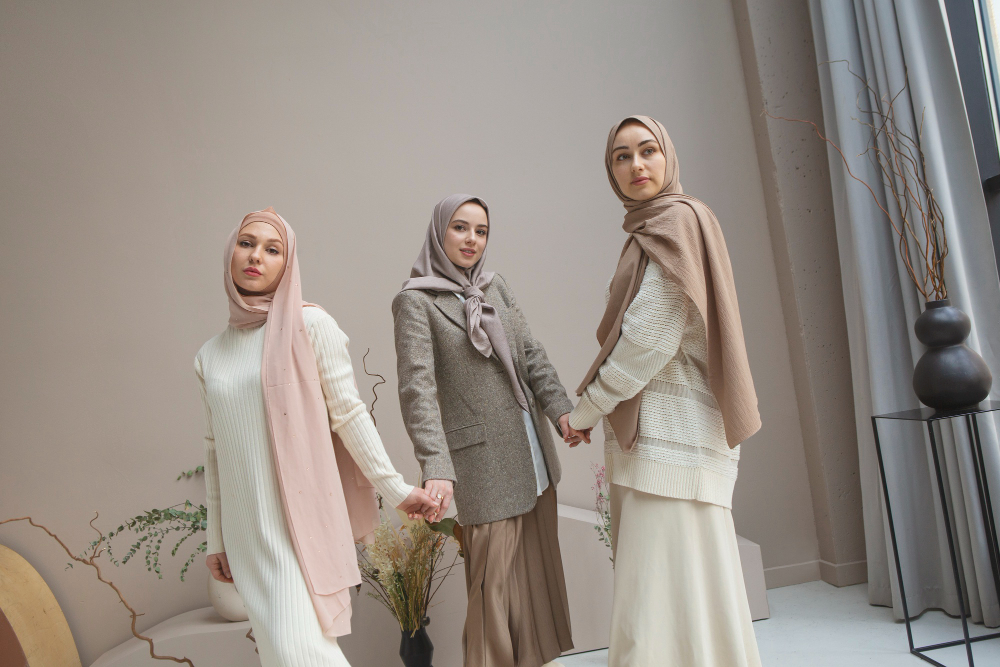Modest fashion in Islam is more than just a style statement; it’s a way of life that aligns with the teachings of the Quran and the Hadith. It’s a reflection of a Muslim’s faith and commitment to the principles of modesty, humility, and decency. This article delves deeper into the halal perspective of modest fashion in Islam, enriched with examples and insights.
The Concept of Modest Fashion in Islam
Modest fashion in Islam is deeply rooted in the concept of ‘Haya,’ which translates to modesty or shyness. It’s a fundamental aspect of a Muslim’s character, influencing their behavior, speech, and dress. The Quran instructs both men and women to lower their gaze and guard their modesty, which is often interpreted as wearing modest clothing [1].
The Prophet Muhammad (PBUH) said, “Modesty is part of faith,” highlighting the importance of modesty in Islam. Modest fashion, therefore, is not just about covering the body but also about embodying modesty in one’s actions and thoughts [2].
Modest Fashion and Muslim Women
Muslim women have been at the forefront of modest fashion, embracing it as a form of self-expression and identity. The hijab, a headscarf worn by many Muslim women, is a powerful symbol of modesty and a visible sign of their faith. It’s not just a piece of cloth but a commitment to modesty and a statement of their Islamic identity [3].
Beyond the hijab, there’s a wide range of modest clothing options for Muslim women, including the abaya, a loose-fitting robe, and the niqab, a face veil. These garments are designed to preserve the modesty of women while allowing them to express their style and personality [4].

The Halal Perspective
From a halal perspective, modest fashion is about adhering to Islamic guidelines on clothing. These guidelines stipulate that clothing must cover the ‘awrah’ (parts of the body that should be covered), be loose-fitting, and not transparent. The clothing should not be so glamorous as to attract undue attention, nor should it resemble the dress of the opposite sex [5].
The halal perspective on modest fashion goes beyond the physical aspects of clothing. It also encompasses ethical considerations, such as ensuring the clothing is produced in a halal manner, without exploiting workers or harming the environment [6].
Modest Fashion in the Global Fashion Industry
Modest fashion has made significant inroads into the global fashion industry, with mainstream brands and designers recognizing the demand for stylish, modest clothing. Muslim fashion influencers and modest fashion weeks have played a crucial role in this shift, showcasing the diversity and creativity of modest fashion [7].
However, the incorporation of modest fashion into the mainstream is not without challenges. Issues such as cultural appropriation and the commodification of religious symbols have sparked debates. Despite these challenges, the rise of modest fashion represents a positive step towards inclusivity and diversity in the fashion industry [8].
Conclusion
Modest fashion in Islam is a multifaceted phenomenon, reflecting the diversity and richness of Muslim cultures worldwide. It’s a testament to the power of faith, identity, and self-expression. As we continue to explore and understand this dynamic field, one thing is clear: modest fashion in Islam is here to stay [9].
References
[1] Quran, 24:30-31
[2] Sahih Bukhari, Book 73, Hadith 125
[3] “The Hijab: More Than a Piece of Cloth,” IslamicFinder.org
[4] “The Abaya: A Symbol of Dignity and Modesty,” GulfNews.com
[5] “Islamic Dress Code: A Brief Guide,” IslamReligion.com
[6] “Halal Fashion: An Ethical and Sustainable Approach,” HalalTimes.com
[7] “Modest Fashion: A Global Phenomenon,” Vogue.com
[8] “The Challenges of Mainstreaming Modest Fashion,” TheGuardian.com
[9] “The Future of Modest Fashion: Trends and Predictions,” ModestFashionNetwork.com

